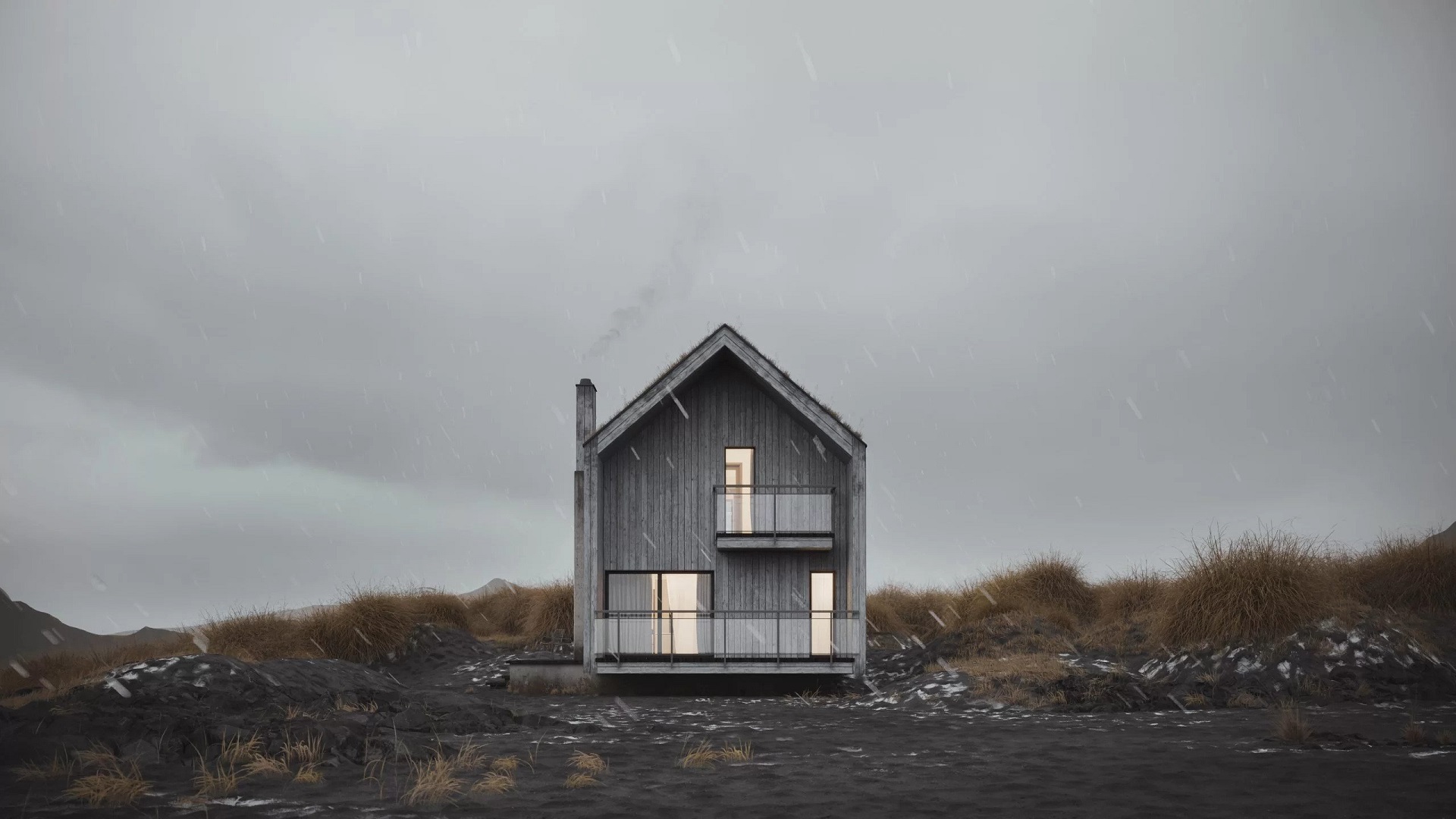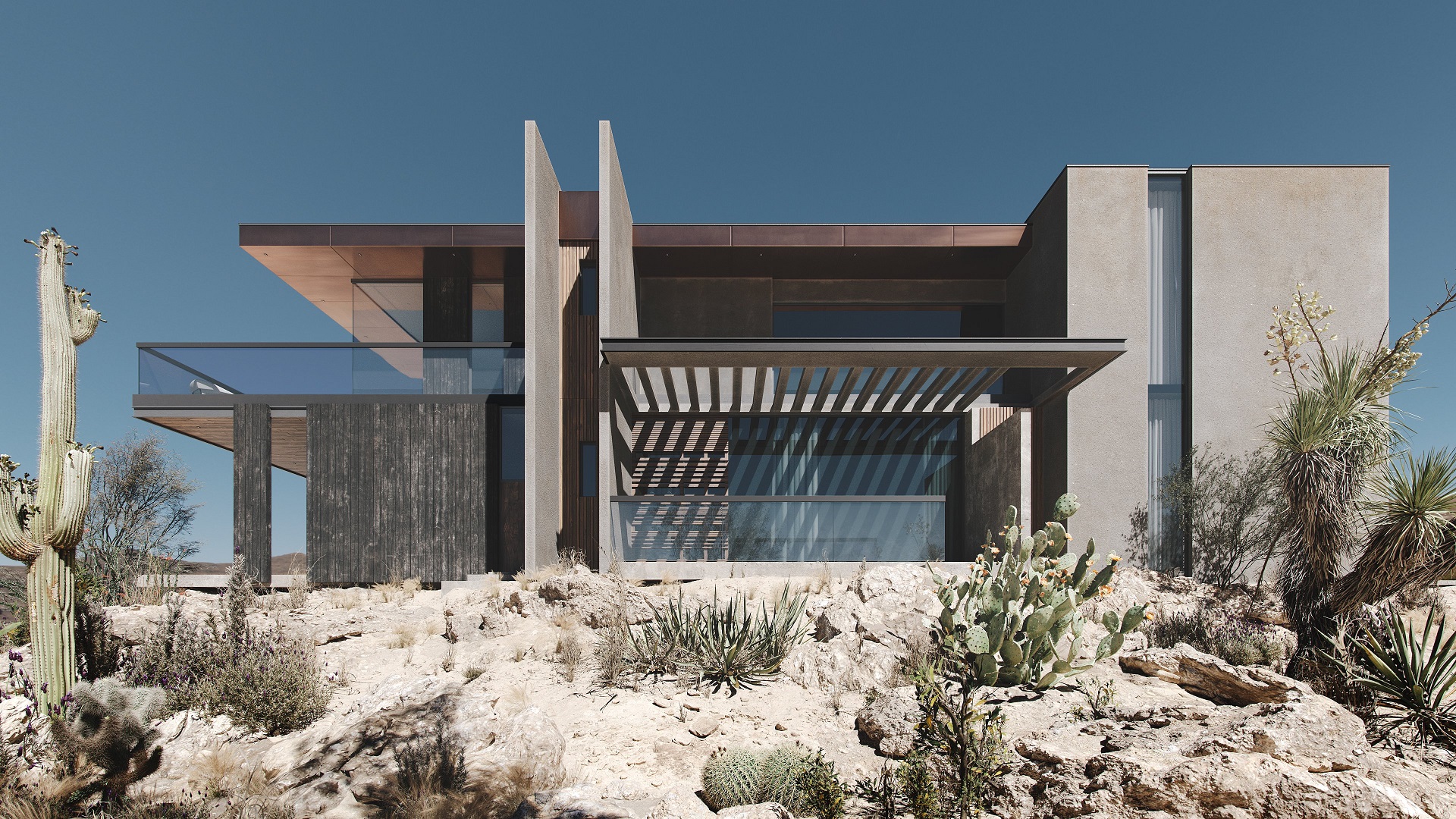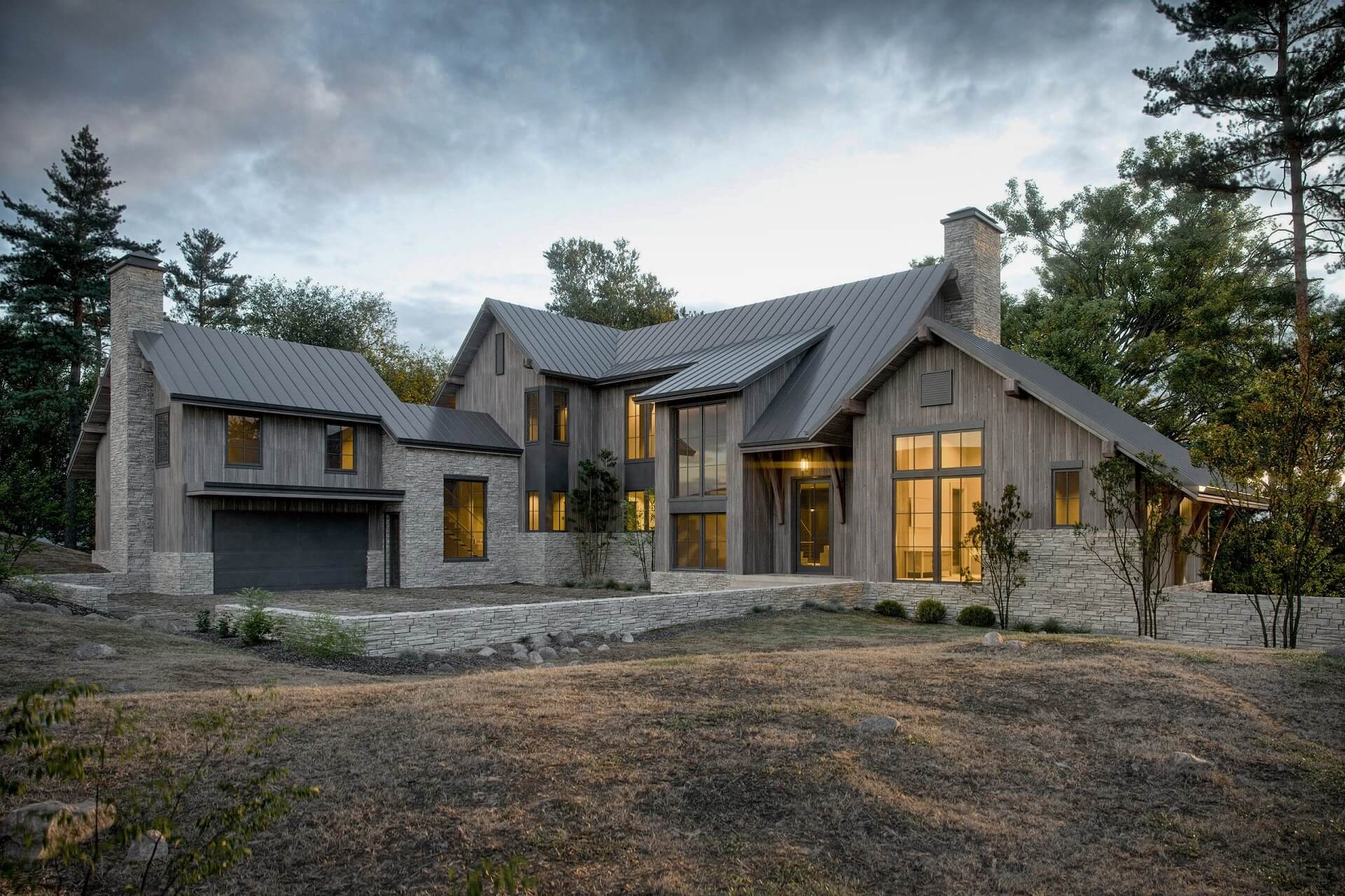Exterior 3D rendering is often used by architects and real estate experts. It serves a wide range of purposes from client presentations to social media marketing. But to do its job impeccably, CGI must be realistic and visually impressive. And to get exceptional rendering for a house exterior, it’s best to know exactly what to ask CG artists for when starting a project. There are some particular things you should pay attention to in order to get the finest results.
Our architectural rendering company knows that every detail matters when creating CGI. And we’ll gladly share 5 tips on how to make your next exterior design project shine in 3D renders. So if you need exterior rendering services and want to ensure you get stunning imagery, read on!
#1. Ask for Renderings with Different Weather Conditions, Seasons, and Times of the Day
By ordering renders showing a house exterior in various weather and lighting conditions, you’ll present your project in the most appealing and informative way. Let’s see what options you have.
Sunny weather is the most obvious and popular choice. That’s because it imparts a cheerful mood to your image and allows one to see the colors and materials clearly. Sunset or sunrise is a go-to option for showing an exterior design in atmospheric lighting. However, don’t underestimate the potential of an overcast twilight rendering which is perfect to emphasize the exterior lighting of the house. In its turn, rainy or stormy weather will give your rendering an unusual and spectacular look. Such a render will work great in your portfolio or on social media.
Ensure your exterior design project leaves a lasting impression and takes your clients’ breath away with stunning visuals.
When it comes to choosing the season for a rendering for a house exterior, summer or spring are the most popular options. They are ideal to showcase the design in a neutral environment. An autumn setting can make the scene more vibrant and colorful. It’s especially useful if you present a countryside house project where the nature around a building plays a big role. Last but not least, a snowy winter scene in an exterior rendering will give a house an especially welcoming cozy atmosphere.
Overall, it is a great idea to get a couple of different renderings showing a design in various settings. This way, you will tell the most comprehensive story about the house and its environment.
#2. Choose Camera Angle and Height Smartly
First of all, the camera angle should highlight the selling points of the project. For example, if a house has a roof terrace, it makes sense to opt for a rendering showing the building from above. In your brief, you should specify the selling points of your exterior design so that a CG artist knows what to focus on.
Eye-level view, the one at which a person usually sees the house, is a reasonable choice for almost any exterior rendering. It gives a realistic visual context as it shows the house closest to how it will look to passers-by and visitors in real life.
Aerial, or so-called bird-view, shows the entire house from afar and covers a large surrounding area. This is a good choice for a rendering for a house exterior if the project consists of several buildings or if there’s a need to emphasize how harmoniously the house will work with its neighborhood.
Get your project estimated in just 1 hour - fill out this brief!
A direct opposite of the previous option, a worm’s-eye view, shows the house from a very low angle. It works great to emphasize the height of a building. So if your project is a high-rise, do not hesitate to order a worm’s-eye rendering as it makes a strong impression.
If you want to highlight a specific architectural detail, there’s no better way to do it than by ordering a close-up rendering. Close-ups will surely present any intricate design solution or specific material at its best.
To showcase the house exterior as fully as possible, it is a good idea to order a couple of visuals showing the design from different angles.
#3. Use Secondary Details to Tell a Story

In a rendering for a house exterior, secondary details, such as trees, street signs, animals, cars, people, etc., help to set the mood and make the image more atmospheric. Adding lifestyle elements gives a rendering a sense of life and evokes an emotional response in your audience. In a rendering of a residential building, details can tell the story of the people who will live there. And if it is a commercial or a civic project, the secondary elements can help show how the building will be used.
For example, the grazing deer in the CG picture above adds to the concept of a fairy-tale house lost in the woods. Such details make the audience contemplate the image longer. They entice one’s imagination and make the place look real.
#4. Don’t Ask to Curtain All the Windows

Giving a glimpse of an interior in the window can go a long way in making a rendering for a house exterior more lively, inviting, and visually appealing. It’s especially useful in the evening or overcast scenes. In such a setting, showing a room with warm light inside will add coziness. Moreover, showcasing interiors in windows helps viewers imagine how people could spend time in the presented building.
On the other hand, curtaining all the windows can slightly lower the exterior 3D rendering cost as a CG artist won’t need to build an additional part of the scene. But we recommend showing the interior at least in one of the windows. This will certainly make the rendering more visually interesting and realistic.
#5. Avoid Chasing Perfection in Every Detail

Everything is possible with CGI, including the depiction of squeaky-clean cars, flawlessly mowed lawns, and absolutely symmetrical brightly green trees. However, the more perfect an image is, the more it speaks of artifice. A too ideal render will look sterile and unnatural. Small imperfections, such as dust, slight signs of wear on the materials, doors left half-open, and so on, will go a long way in making a rendering truly realistic and appealing.
In architectural CGI, all details matter. The glimpses of the future life inside and around the building capture viewers’ imagination. The weather and lighting conditions and camera angles set the mood, while small imperfections make a rendering for a house exterior exceptionally lively and appealing. We hope now you know what to look for in an exterior render and will always get truly magnificent images!
Want to ensure your next project presentation takes the viewers’ breath away? Contact us for architectural rendering services to get mind-blowing 3D imagery!

Stacey Mur
Content Writer, Copywriter
Stacey is a content writer and a CG artist. Outside of work, Stacey enjoys musicals, Star Wars, and art talk. A proud Corgi parent.



